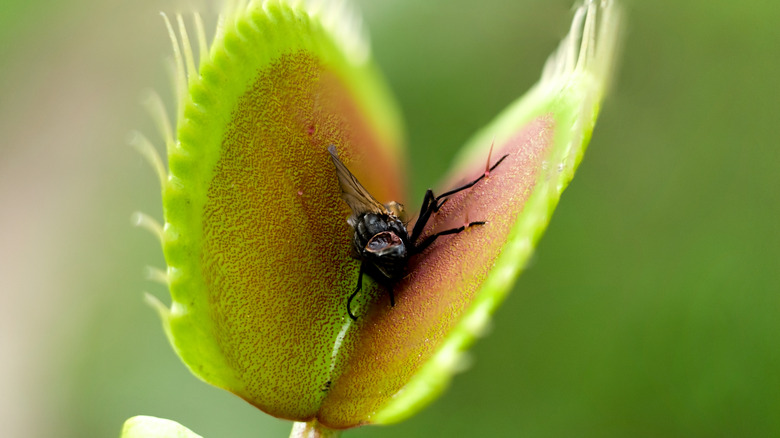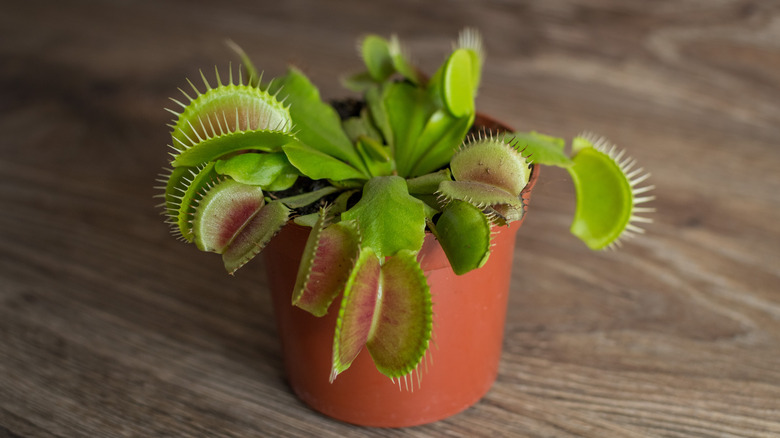Do Venus Flytraps Actually Help With Bugs Around Your Home?
If you mention hungry houseplants, many people might be reminded of Audrey II, the insatiable plant that grew larger and larger in "Little Shop of Horrors." When it comes to fact over fiction, though, there's no doubt the Venus flytrap is one of the plant world's more intriguing carnivorous inhabitants. As the name suggests, Venus flytraps do in fact eat bugs as part of their natural intake of nutrients. But, does that mean you can rely on these little plants to keep your home pest free? The answer is affirmative — although that yes comes with some limitations.
According to Venus Flytrap World, these little wonders can only devour a small number of insects each month, and they only attract bugs looking for nectar so not all pests are drawn to them. Their trap capacity is also relatively small. That means they can't help you with some of the larger types of insects. Learning more about how Venus flytraps work, and the types of insects they consume can help you decide if they're right for your home.
Should you add a Venus flytrap to your houseplant collection?
Venus flytraps work best in controlling insects like flies, ants, and gnats, and can eat about five to 10 per month. If you often have annoying fruit flies buzzing around your home, a Venus flytrap on a windowsill might help eliminate them. You can even keep several of these plants in and around your home for more insect-eating potential.
They attract bugs by exuding a sweet liquid similar to the nectar found in flowers. They also have a rosy hue within the trap to emulate blooms. However, the number of traps on each plant is quite low — five to seven or so — so their capacity is naturally limited. They also digest the captured insects slowly taking from one week to three weeks depending on the size of the bug. The traps stay closed until their kill is fully ingested, and when they reopen, they're ready to begin the feeding cycle once again.
Venus flytraps as bug controllers
Other insects that can be small enough for a Venus flytrap to snare include mosquitoes and wasps. The former two are quite pesky and are potentially harmful, making the placement of a Venus flytrap or two on a patio a great idea to consider. However, if you have lots of good-for-the-environment bees buzzing about, and don't want them to become plant food, then keeping Venus flytraps as indoor plants might be a better choice.
Another thing to keep in mind is that Venus flytraps go dormant during the winter. Amid this sleepy period that usually lasts several months, they no longer work to capture bugs. That might not be an issue if insects become less active in your area during the winter months. In warmer climates, however, you may find the Venus flytrap is not your best resource for year-round help with minor insect control.


